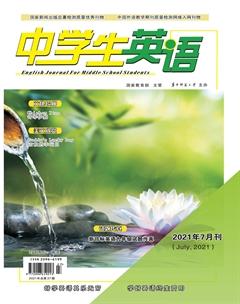Chichen Itza奇琴伊察
张倩云
Chichen Itza is the second most popular site for visitors to Mexico. It is considered to beone of the Seven Wonders of the New World. Located on the Yucatan Peninsulal, Chichen Itzawas arge city built by the Maya people. It thrived2 from about 600 A.D.until /22/,whenthe power in the region shifted. Today it can be visited by tourists.
奇琴伊察是墨西哥第二受游客欢迎的地点。它被认为是新世界七大奇迹之一。奇琴伊察位于尤卡坦半岛,是玛雅人建造的一个大城市。它从公元600年左右开始蓬勃发展,直至1221年该地区的政治中心转移。今天.游客们都可以前往参观。
Interesting Chichen Itza Facts:
Chichen Itza also means "at the mouth of thewell of the Itza".
Chichen Itza may have been built where it wasbecause of the location3 0f two large natural sink holesnearby that would have provided water year-round.
One of these sink holes was thought to havebeen used as a place of human sacrifice4. Thesesacrifices were made in times of drought5, and men,women and children would be thrown in the well asa sacrifice to the Chaac God. The Chaac God is theMaya God of rain and lightning and these sacrificeswere done to end drought.
In about 600 A.D., Chichen Itza had started togain importance in the region. Between 900 and1050 A.D. Chichen Itza had become a powerfulcapital. It also controlled northern and centralYucatan at the time.
It was one of the largest Maya cities. It coveredfive square kilometers.
奇琴伊察的意思是“在伊察的水井口”。
奇琴伊察之所以在此建造的原因,可能是因為附近有两个巨大的天然水池,可全年提供水源。
其中一个水池被认为是被用作活人祭祀的地方。这些祭祀在大旱时期进行,男人、女人和孩子会被扔进井里,作为献给恰克神的祭品。恰克是玛雅的雨和雷之神,而这些祭祀是为了结束干旱。
在公元600年左右,奇琴伊察已开始在该地区占有一定的地位。在公元900年至1050年之间,奇琴伊察已经成为一个强大的首都,当时它还控制了尤卡坦半岛的北部和中部。
它是玛雅最大的城市之一,占地5平方公里。
Chichen Itza may have been a religious6 center for aperiod of time and is believed to have been a pilgrimage7place for the Maya. Some suggest that the site whereChichen Itza was built was already a popular place ofpilgrimage long before building of the city ever began.
There is a wide variety of architectura18 stylesbecause of the fact that Chichen Itza had such diversepopulation and culture.
All the buildings of Chichen Itza are made ofstone. It's also thought that the Maya did no use thewheel to build any of their temples, pyramids orpalaces.
Some of the most famous buildings in Chichen Itzathat have survived include: The Warrior's Temple, ElCastill0, and The Great Ball Court.
El Castillo is probably the most famous image ofChichen Itza. It is a monument9 in the shape of apyramid. There are four staircases on the outside of thepyramid.
Part of what sparked'o an interest in Chichen Itzawas a book (travel journal) written by John LloydStephens in 1843 called Incidents of Travel in Yucatan.Further exploration 1l of the city began from the interestand imagination of his readers.
About l.2 million people visit the ruins of ChichenItza every year.
奇琴伊察可能在一段时间里是宗教中心,它被认为是玛雅入朝圣的地方。一些人认为,早在奇琴伊察开始建造之前,这里就已经是一个很受欢迎的朝圣场所了。
由于奇琴伊察的人口和文化如此多样化,这里有各种各样的建筑风格。
奇琴伊察的所有建筑都是用石头建造的。人们还认为,玛雅人没有使用轮子来建造任何寺庙、金字塔或宫殿。
奇琴伊察现存的一些最著名的建筑包括:武士神庙、羽蛇神金字塔和球戏场遗址。
羽蛇神金字塔可能是奇琴伊察最著名的形象。它是一座金字塔形状的神庙。在金字塔的外侧有四个楼梯。
引起人们对奇琴伊察的兴趣的一部分原因是约翰·劳埃德·斯蒂芬斯在1843年写的一本名为《尤卡坦旅行纪闻》的书。人们对这座城市的进一步探索始于他的读者的兴趣和想象力。
每年大约有120万人参观奇琴伊察遗址。
(英语原文选自:softschools.com)
[Notes]
1.peninsula [p??n?nsj?l?]n.半岛
2.thrive[θra?v]v.繁荣,兴旺
3. location [lau'keijn]n.位置;地点
4.sacrifice[?s?kr??fa?s] n.牺牲;祭品
5.drought [dra?t]n.干旱
6.religious [r??l?d??s] adj.宗教的
7.pilgrimage[?p?lɡr?m?d?] n.漫游;朝圣之行
8.architectural[?ɑ?k??tekt??r?l] adj.建筑上的
9.monument[?m?nj?m?nt] n.纪念碑;历史遗迹 10. spark[spɑ?k] v.点燃;导致;引发
II. exploration [?ekspl??re???n] n.探測;探索

